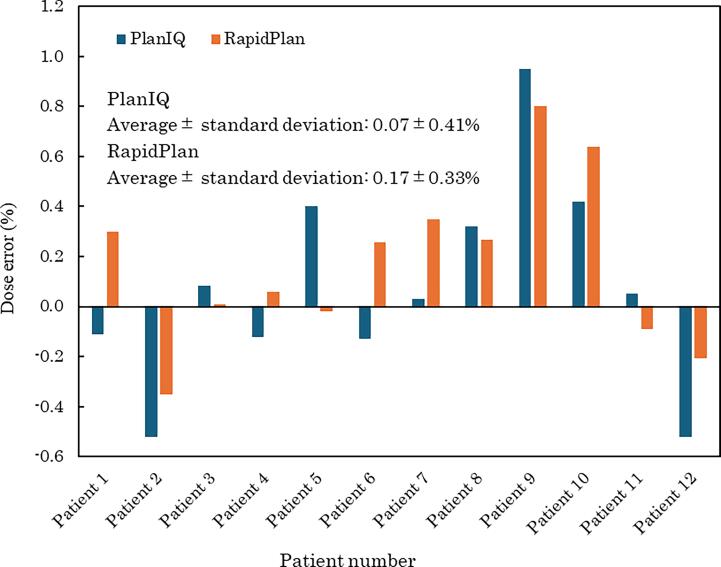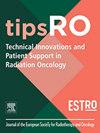两种治疗计划剂量-体积直方图预测工具的比较评价:治疗计划质量和剂量验证准确性。
IF 2.8
Q1 Nursing
Technical Innovations and Patient Support in Radiation Oncology
Pub Date : 2024-12-13
DOI:10.1016/j.tipsro.2024.100297
引用次数: 0
摘要
目的:本研究旨在比较RapidPlan和PlanIQ为12例前列腺癌患者制定的治疗方案,重点关注剂量均匀性、危及器官剂量减少(OARs)、方案复杂性和剂量验证准确性。目标是确定在实现均匀靶剂量分布和降低OAR剂量方面表现优异的工具,同时确保准确的剂量验证。方法:评估计划靶区(不包括直肠)的剂量均匀性和OARs(直肠和膀胱)的剂量减少情况。验证包括用电离室剂量计进行点剂量测量和剂量分布的伽马分析。计算监测单元以评估计划的复杂性。结果:PlanIQ提供了更好的剂量均匀性,与RapidPlan相比,剂量均匀性指数有所提高。RapidPlan在减少OAR剂量方面更有效,特别是在直肠,在不同剂量水平上都有显著的减少。剂量验证显示两种工具之间无显著差异。然而,与RapidPlan相比,PlanIQ显示计算剂量和测量剂量之间的平均差异较小,剂量分布匹配略好,变异性较小。结论:RapidPlan在降低OAR剂量方面更有效,而PlanIQ具有更好的剂量均匀性和更低的计划复杂性。两种工具在剂量验证精度方面表现相似,PlanIQ在剂量分布匹配方面显示出轻微的优势。计划工具的选择取决于主要治疗目标,是降低OAR剂量还是提高靶剂量均匀性。本文章由计算机程序翻译,如有差异,请以英文原文为准。

Comparative evaluation of two dose-volume histogram prediction tools for treatment planning: Treatment planning quality and dose verification accuracy
Purpose
This study aims to compare treatment plans created using RapidPlan and PlanIQ for twelve patients with prostate cancer, focusing on dose uniformity, dose reduction to organs at risk (OARs), plan complexity, and dose verification accuracy. The goal is to identify the tool that demonstrates superior performance in achieving uniform target dose distribution and reducing OAR dose, while ensuring accurate dose verification.
Methods
Dose uniformity in the planning target volume, excluding the rectum, and dose reduction in the OARs (the rectum and bladder) were assessed. The validation included point-dose measurements with an ionization chamber dosimeter and gamma analysis of dose distributions. Monitor units were calculated to evaluate plan complexity.
Results
PlanIQ provided superior dose uniformity, with improvements in the dose homogeneity index compared with RapidPlan. RapidPlan was more effective in reducing OAR doses, particularly in the rectum, with significant reductions at various dose levels. Dose verification showed no significant differences between the two tools. However, PlanIQ showed a smaller mean difference between the calculated and measured doses and a slightly better dose distribution match with less variability than RapidPlan.
Conclusions
RapidPlan was more effective at reducing OAR doses, whereas PlanIQ achieved better dose uniformity and lower plan complexity. Both tools performed similarly in terms of dose verification accuracy, with PlanIQ showing a slight advantage in dose-distribution matching. The choice of planning tool depends on the primary treatment goal, whether it is to reduce the OAR doses or improve the target dose uniformity.
求助全文
通过发布文献求助,成功后即可免费获取论文全文。
去求助
来源期刊

Technical Innovations and Patient Support in Radiation Oncology
Nursing-Oncology (nursing)
CiteScore
4.10
自引率
0.00%
发文量
48
审稿时长
67 days
 求助内容:
求助内容: 应助结果提醒方式:
应助结果提醒方式:


